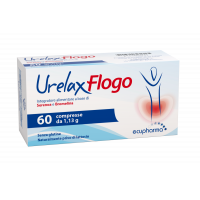
Benign Prostatic Hyperplasia(BPH) is a very common condition in older men.
It is defined as the increase in size of the prostatic tissue in the transitional area around the urethra (prostate adenoma) which over time causes trouble urinating.
The size of the prostate increases as men get older, usually as a consequence of hormone unbalance and effects of several growth factors.
Approximately 60% of men over 60 has trouble urinating. This condition may be due to prostate hyperplasia or to an alteration of bladder functions. Approximately 30% of men over 65 suffer from severe urinary symptoms associated with prostate hyperplasia.
BPH presents as urinary symptoms which may become so serious as to negatively impact the patient’s quality of life.
Symptoms are due to several factors: the obstruction caused by the enlargement of the prostate which blocks the flow of urine; the compression caused by the muscle fibers of the prostate tissue, which eventually leads to a narrowing of the physiological ‘funnel’ formed by the bladder neck and the urethra in which urine normally flows; the response of the bladder to the obstruction.
Patients report reduced and often intermittent urine flow as well as an increased frequency in urination, especially at night.
There may also be an urgent need to urinate, a delay in the actual beginning of the flow, terminal dribbling and a sensation of incomplete emptying. If left untreated, the condition can escalate to acute urinary retention (inability to urinate) because the enlarged prostate has completely blocked the urethra. Urinary catheterisation will allow the bladder to be drained.
An accurate clinical exam which also includes rectal examination is essential in ruling out any other condition which can cause similar symptoms. Useful exams include uroflowmetry and urodynamic test, which will help assess the flow of urine and the consequences on bladder functioning caused by the obstruction of the urine flow. PSA (Prostate-Specific Antigen) level is also tested as its amount may be higher as a consequence of prostate enlargement. The results of this test must be adequately assessed to rule out the presence of any malignant condition. Other routine exams include urine test and urine culture, which helps rule out any UTI (which may cause symptoms similar to BPH’s).
Finally, transrectal ultrasound helps assess the size of the prostate, which is essential especially if there is going to be surgery.
Treatment of BPH is based on several therapeutic means for the purpose of relieving the patients’ symptoms and quality of life and avoiding long-term complications ranging from urinary retention to bladder stones and chronic kidney failure.
The first approach is usually pharmacological. There are several types of drugs which have an effect on prostate: alpha-adrenergic blockers, 5-alpha-reductase inhibitors; as well as phytotherapeutics (Serenoa Repens). Drug therapy is a long-term treatment which in some cases may be enough to cure the patient’s symptoms.
If medications turn out to be ineffective, patients will have to resort to surgery.
The therapeutic strategy will therefore depend on severity of symptoms as well as impact on daily life. Any possible risk as well as benefits of each option will have to be thoroughly discussed.
Therapeutic Solutions
Medicinal Products:
Dalerpen 5mg - Tadalafil – 14 and 28 film-coated tablets
Decuster - Dutasteride - 0,5mg 30 and 90 soft capsules
Luracin - Solifenacin succinate/Tamsulosin hydrochloride 6mg/0,4mg modified-release tablets
Lura - Tamsulosin hydrochloride - 0,4mg 20 modified release capsules
Profuzo- Alfuzosin hydrochloride 10mg prolonged-release tablets
Log in to the Reserved Area to view the complete product information sheets
Food supplements:


